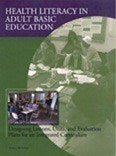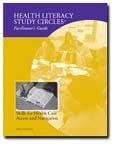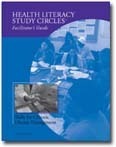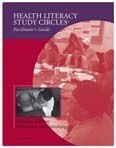
Health Literacy in Adult Basic Education: Designing Lessons, Units, and Evaluation Plans for an Integrated Curriculum
This guide is designed for educators who are interested in integrating health literacy skills into their current adult education instruction. It was developed as part of the Study Circles series and provides tools for the development of health literacy units, lessons and evaluation plans. Research and practitioners in health and adult education worked together to develop a skills-based approach for integrating health literacy into adult education programs. All of these materials were rigorously piloted by Dr. Winston Lawrence and Elyse Barbell, Director of the Literacy Assistance Center (LAC).

Health Literacy Study Circles+: Skills for Health Care Access and Navigation
The goal of this 15-hour study circle is to prepare participants to help their students develop basic skills needed for accessing health-related services and for navigating health care systems. These skills include filling out forms, reading signs, and interpreting rights and responsibilities.

Health Literacy Study Circles+: Skills for Chronic Disease Management
The goal of this 15-hour study circle is to prepare participants to help their students develop basic skills needed for chronic disease management. These skills include reading medicine labels, following directions, and measuring dosages correctly; using measurement tools to monitor health; monitoring symptoms and talking to health care professionals; and making critical decisions about health care.

Health Literacy Study Circles+: Skills for Disease Prevention and Screening
The goal of this 15-hour study circle is to prepare participants to help their students develop basic skills needed for preventing and screening for diseases. These skills include reading and interpreting risk communication materials; reading informed consent forms; understanding health information in the media; filling out forms; and discussing symptoms with a medical professional and making critical decisions about health care.
Additional Integrative Approaches
- “Into a New Light: Respect and Dignity for All” A Literacy and Economic Rights Resource Reader
- “What To Do For Health” Book Series and Curriculum
- TV411 An innovative multi-media adult education curriculum.
- What the Health! A Literacy and Health Resource for Youth
- Health Promotion for Adult Literacy Students: An Empowering Approach
- Culture, Health and Literacy: A Guide to Health Education Materials for Adults with Limited English Literacy Skill



